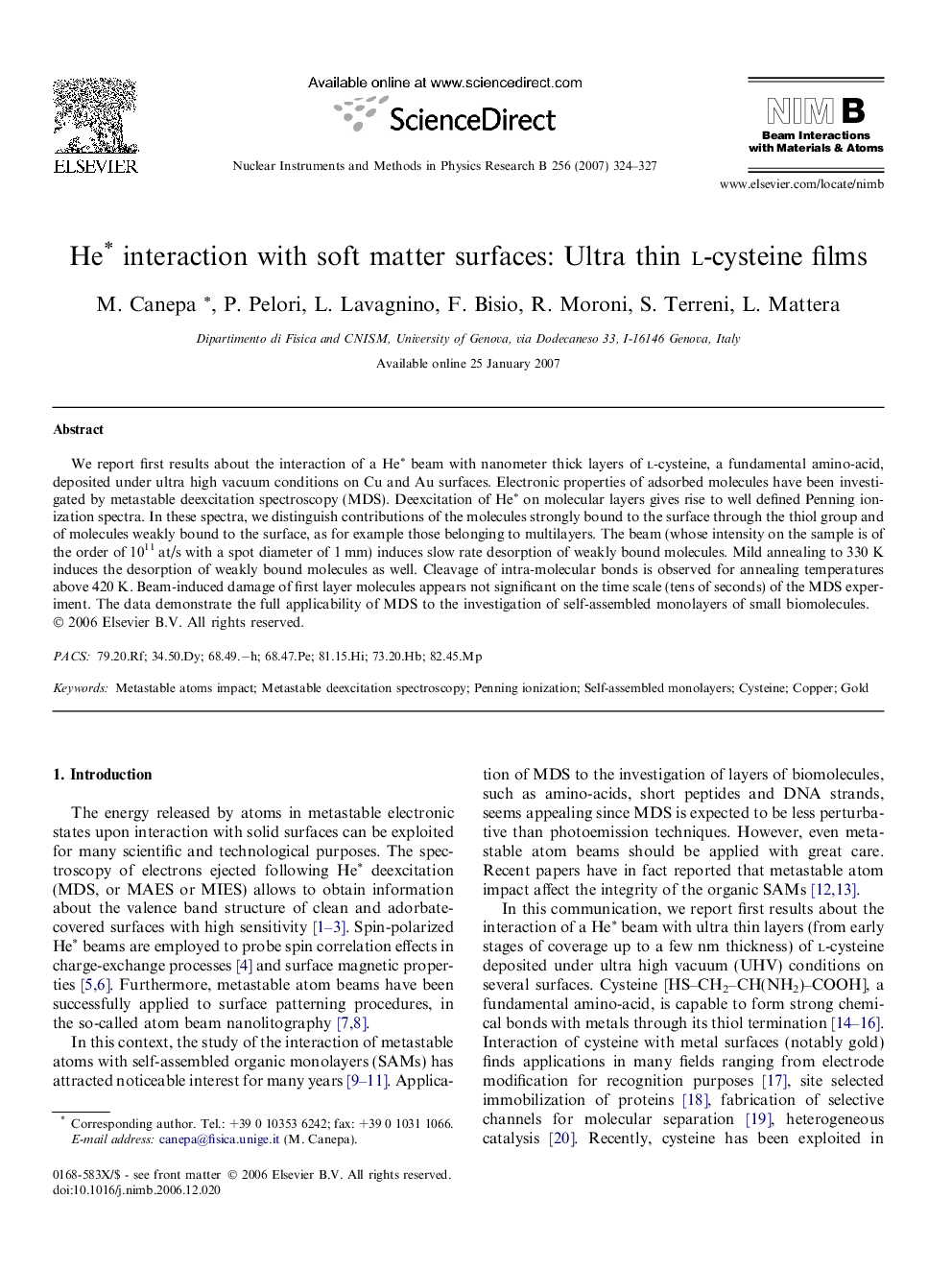| Article ID | Journal | Published Year | Pages | File Type |
|---|---|---|---|---|
| 1684979 | Nuclear Instruments and Methods in Physics Research Section B: Beam Interactions with Materials and Atoms | 2007 | 4 Pages |
Abstract
We report first results about the interaction of a Heâ beam with nanometer thick layers of l-cysteine, a fundamental amino-acid, deposited under ultra high vacuum conditions on Cu and Au surfaces. Electronic properties of adsorbed molecules have been investigated by metastable deexcitation spectroscopy (MDS). Deexcitation of Heâ on molecular layers gives rise to well defined Penning ionization spectra. In these spectra, we distinguish contributions of the molecules strongly bound to the surface through the thiol group and of molecules weakly bound to the surface, as for example those belonging to multilayers. The beam (whose intensity on the sample is of the order of 1011Â at/s with a spot diameter of 1Â mm) induces slow rate desorption of weakly bound molecules. Mild annealing to 330Â K induces the desorption of weakly bound molecules as well. Cleavage of intra-molecular bonds is observed for annealing temperatures above 420Â K. Beam-induced damage of first layer molecules appears not significant on the time scale (tens of seconds) of the MDS experiment. The data demonstrate the full applicability of MDS to the investigation of self-assembled monolayers of small biomolecules.
Keywords
Related Topics
Physical Sciences and Engineering
Materials Science
Surfaces, Coatings and Films
Authors
M. Canepa, P. Pelori, L. Lavagnino, F. Bisio, R. Moroni, S. Terreni, L. Mattera,
